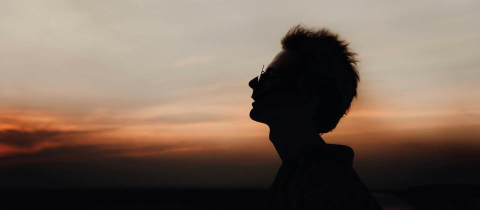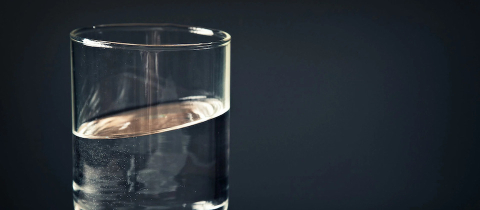Science fiction movies are usually a little more fiction than science, but you never know where you might catch a glimmer of the real world. For instance, take the bona fide space classic: Star Wars. Of course, “using the force” to make things happen is just about as scientifically credible as using “energy medicine” to cure diseases. However, while watching the final scene of the film’s most recent instalment, The Last Jedi, I noticed something very interesting. And it turns out a few scientists were curious as well. Without revealing any major plot spoilers, let me set the scene.
In a moment of desperation, our plucky cast of wannabe space-wizards, Rebel fighter pilots, and ball-shaped robots land on a never-before-seen planet called Crait. Its landscape is unbelievably flat, dry, barren, and as white as an arctic winter. Not to be confused with the snowy Rebel base in episode 5, the whole planet is covered in salt instead of snow. But to the delight of my inner cinematographer, when the Rebels fly their spaceships across the flat white landscape, they leave behind a trail of mysterious, blood-red pigments. No, these are not chemtrails but some kind of bright red mineral hidden underneath the salty surface. Beyond the incredible visual effect, many geologists, an “astrogeologist”, and even a NASA planetary scientist have speculated how such a place could come to be, if at all. And it turns out that Crait might not just be pure imagination.
The scene was actually filmed right here on Earth at the Salar de Uyuni salt flat of southern Bolivia. Spanning over 10,000 square kilometres with a total elevation change of only one metre, the Salar is the flattest place on Earth and suits the Star Wars universe better than our own. In fact, some researchers have even suggested using the salt flat as a test base for simulated Mars missions because of its extreme planetary conditions.
But salt deserts, like the Salar de Uyuni, are a totally natural consequence of thousands of years of climate change. When prehistoric lakes high in salt content evaporate, they leave behind these massive geographic artifacts. Bright white and almost completely featureless in every direction, the Salar feels as though you’re standing inside a giant salt shaker. But by salt, I don’t just mean the kind you find on your kitchen table, although there’s plenty of that as well. The Salar de Uyuni is rich in several kinds of ionic compounds, in particular lithium – the valuable ion powering most of the world’s batteries.
However, you won’t find any bright red crystals under the surface of the Bolivian desert or anywhere else on Earth for that matter. But it’s not impossible that a planet with a different geographic climate, atmosphere, and astronomical history could actually exist. Minerals can become coloured through impurities like metal ions or radiation. For example, halite (or common table salt) will turn amber then blue after being exposed to enough gamma radiation. Some minerals will even react to high levels of UV radiation. So the bright red coloured salt seen in The Last Jedi could be the result of thousands of years of intense sun exposure.
And since we’re talking about a species-diverse galaxy inhabited by both humans, Wookiees, and whatever the heck Jabba the Hutt is, it’s very possible that some kind of alien organism could be responsible for the bright red pigments. Photosynthetic single-celled organisms, bacteria, and algae come in a range of colours which reflect how they absorb light. For example, some kinds of cyanobacteria contain a special kind of photosynthesizing pigment called phycoerythrin, which turn bacteria pink. Interestingly, scientists believe that ordinarily grey flamingos become pink after consuming these kinds of bacteria.
However, any kind of alien microbe would need to survive the harsh salty landscape and dry desert climate of such a place. There is basically no plant life on Earth’s salt flats. And yet, there exist several kinds of microbial species which have adapted to live in incredibly salty environments: they are called halophiles. Some kinds of salt-loving microorganisms even colour salt-rich ponds reddish-pink, so it’s not such a stretch to believe that a long time ago, in a galaxy far, far away, bright-red halophiles existed.
Red salty planets aside, now I really want to know how other galaxies could possibly have evolved animals as cute as porgs.
Want to engage with this content? Comment on this article on our Facebook Page!







